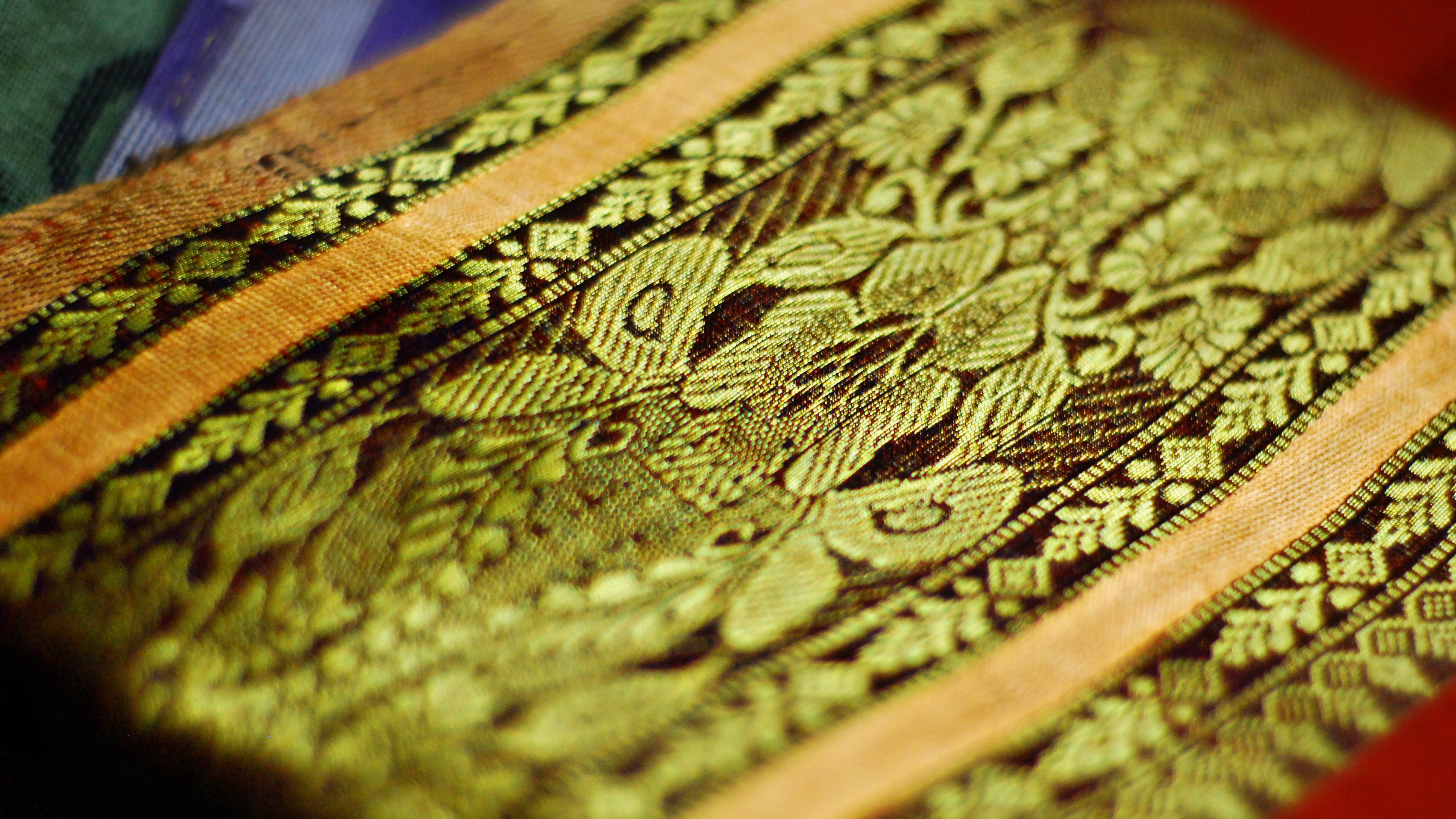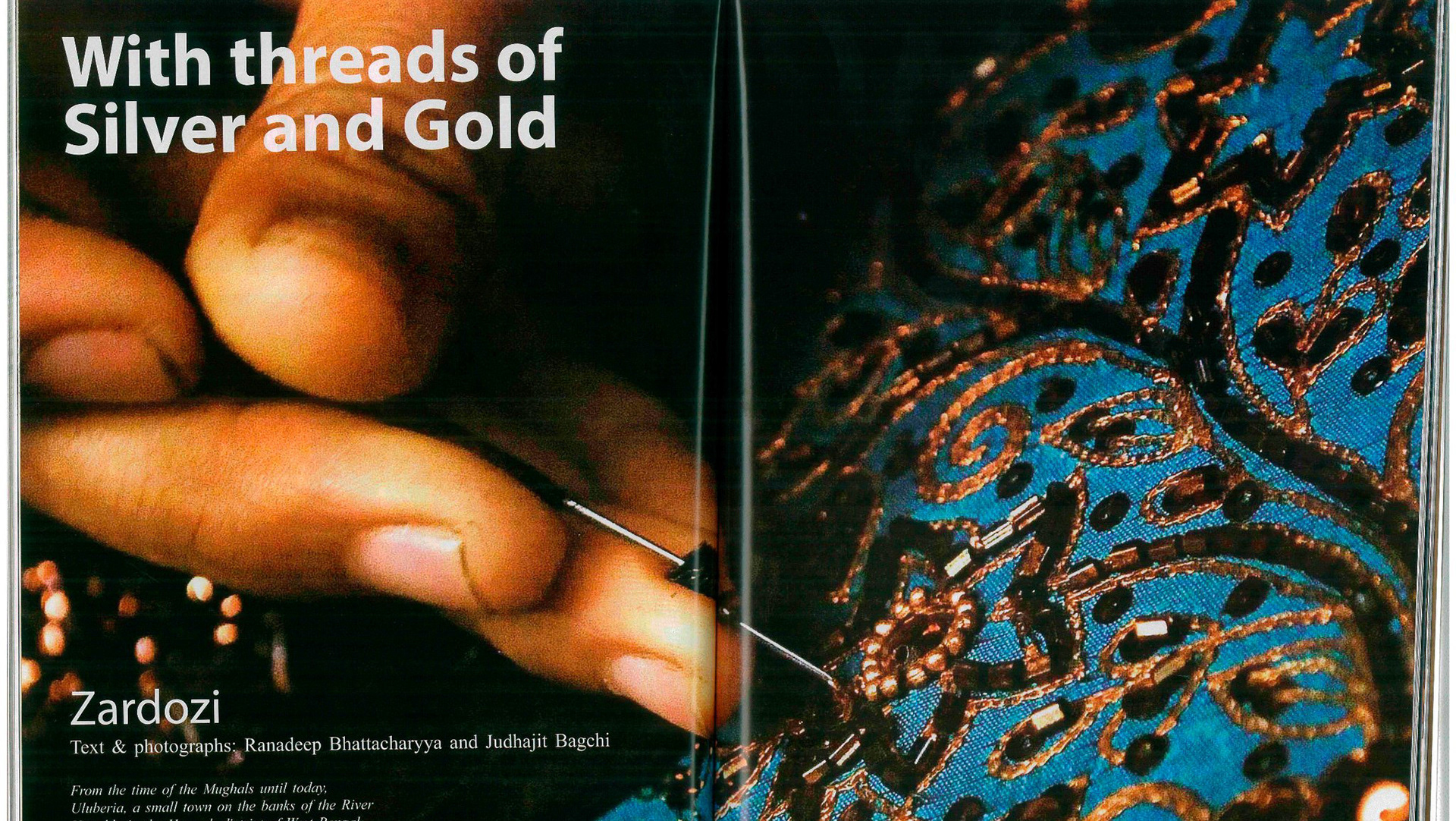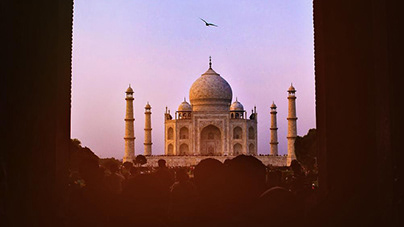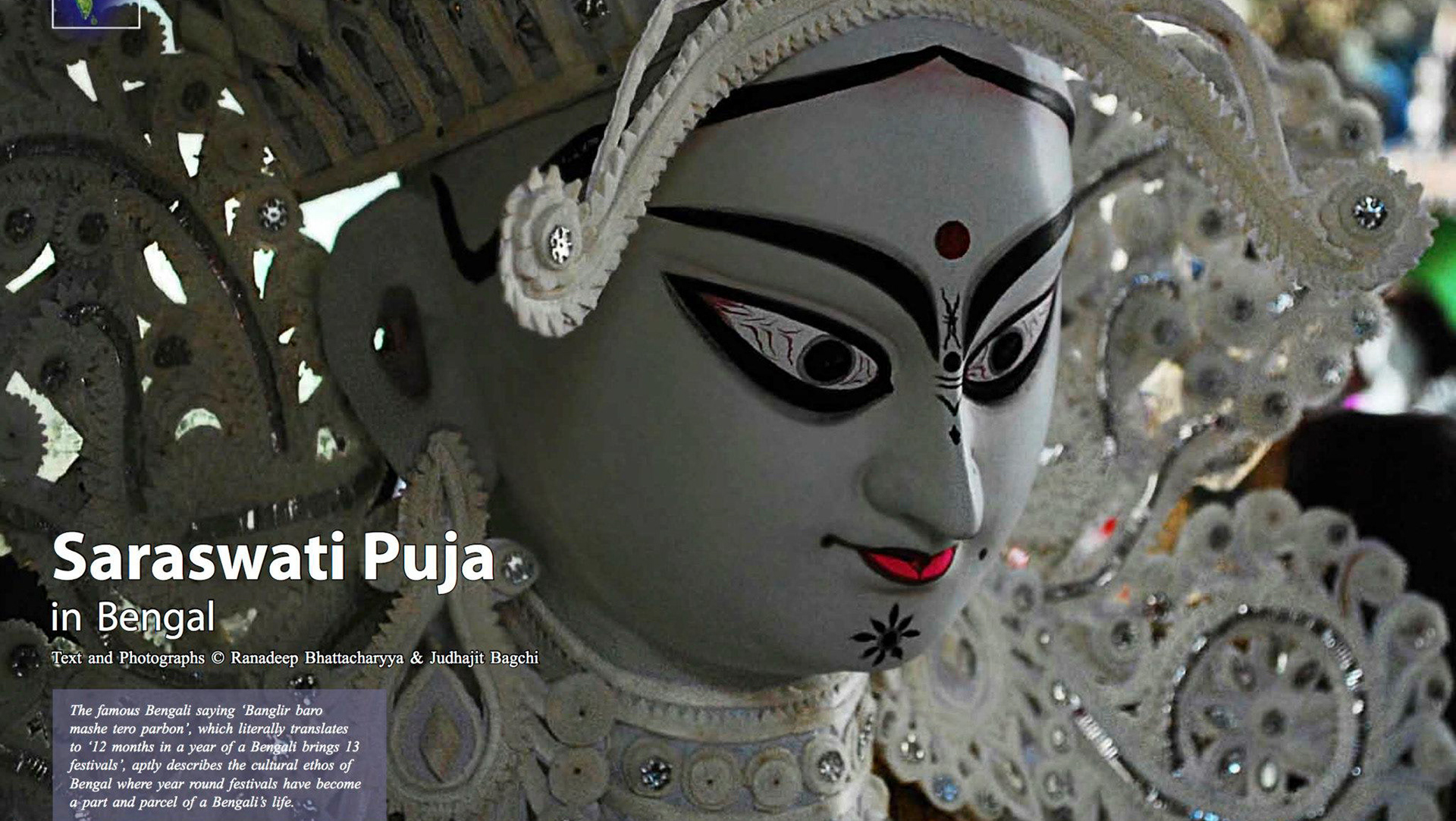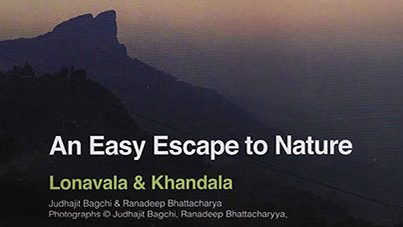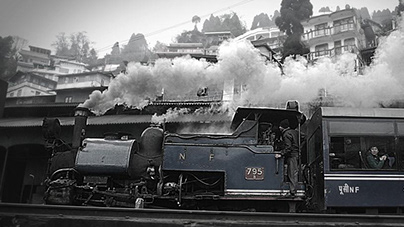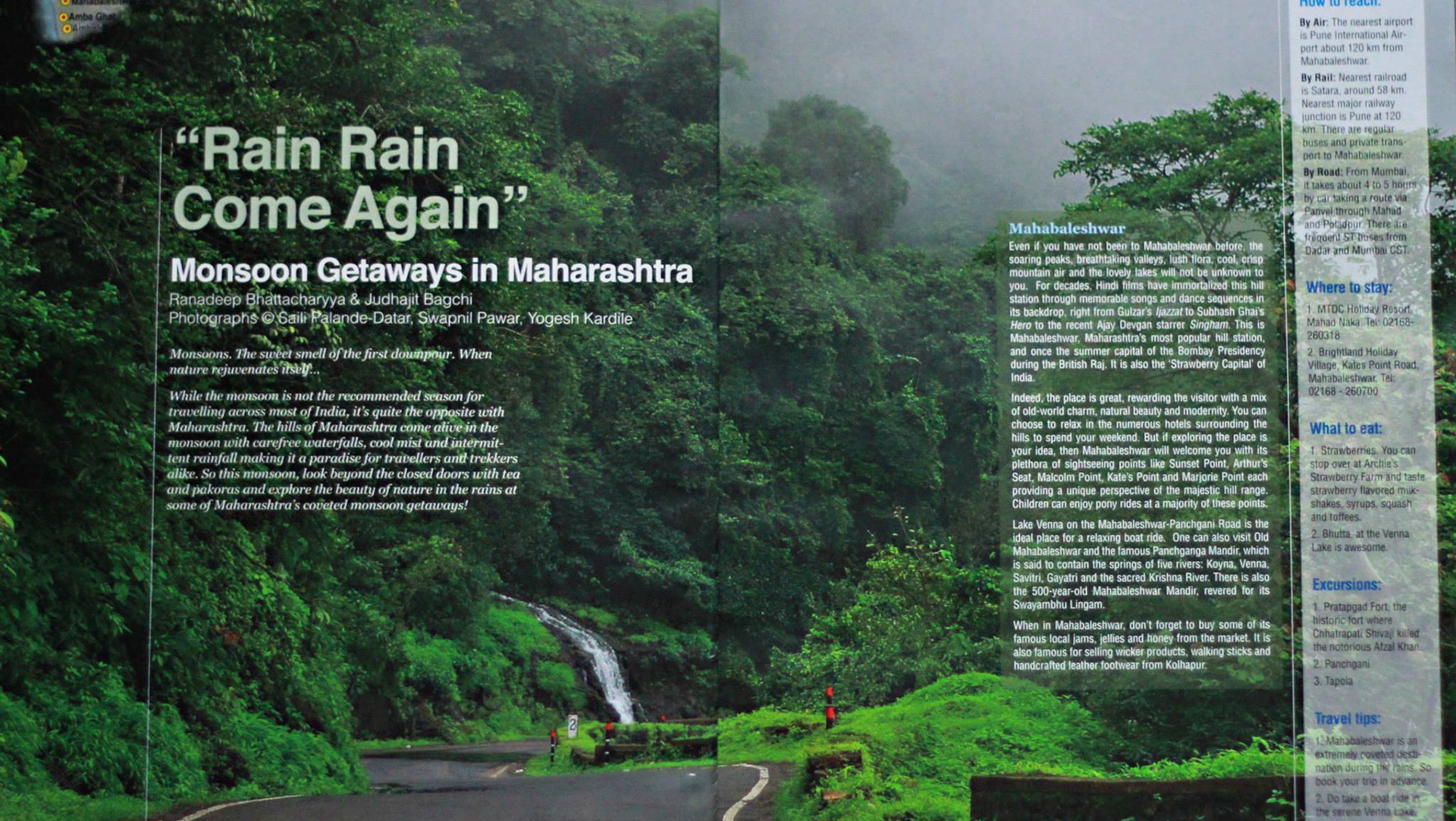Jai Vilas Palace, Jawhar
Indian Princely State Jawhar's Fiscal Court Fee and Revenue Stamps between 1927-38
Scenic Localtions Around Jawhar
Wilderness around jawhar
Scenic locations around Jawhar
Lotuses in the pond
Tribal Life in Jawahar
Warli Art and Artist Village in Jawhar
Shirpamal, Jawhar
Hanuman Point, Jawhar
Sunset Point, Jawhar
Dabosha Waterfall, Jawhar
Jawhar: An unexplored journey into the Tribal tapestry
Article and Photographs by Ranadeep Bhattacharyya & Judhajit Bagchi
Ever wondered if your getaways could be like the song sequences in the movies? Winding roads through lovely mountains with no one around to bother. Roaring waterfall amidst the sylvan retreats or a breathtaking sunset overlooking the valley. Sitting by the fire watching tribal dance performed by the humble inhabitants of the land themselves. A place where the mind can just wander away. All of this may sound like a wishful dream but not to the one who has been to Jawhar- the erstwhile tribal capital nestled within the green hills of the Sahyadris in the Thane district of Maharashtra; only three hours away from the hustle and bustle of amchi Mumbai!
Today, when privacy with nature is almost a luxury with hill stations either being commercialized or overcrowded, Jawhar, referred to as ‘Mahabaleshwar’ of Thane District, is a rare exception. What adds an edge to its picturesque beauty is its thriving tribal life with centuries of history that is till date untouched by urbanization. Driving down to Jawhar from Mumbai is in itself an adventure. The entire landscape changes once you take a right turn from Manor on the NH8 on to the state highway that leads to Jawhar. There are so many scenic locations on its coiling biking trails amidst thick greenery and gushing streams that one is spoilt for choices. This tribal town can be visited almost all round the year though the best time would be between October to February. Diwali is especially celebrated with great pomp and show, as the loclas believe it is on this auspicious ‘Deva-ali’ day that gods (deva) come (ali) to visit their humble abode. Monsoons are also a treat here for the rain lovers as the entire area transforms into a lush green carpet dotted with numerous waterfalls.
Jawhar was the capital of the ancient Warli tribes who find their mention in the 3rd century BC annals of the Greek traveller Megasthenes’s accounts while he visited the court of Chandragupta Maurya. In fact scholars opine that the association of Warli tribes to their present homeland goes back to 2300 years. The British accounts of 1885 describe the Warlis as ‘members of one of the wildest aboriginal tribes in Thana District, who lead a nomadic life, constantly wandering from place to place.’ It was a result of their shifting agricultural practices that the Warli tribes today are scattered all around Maharashtra and Madhya Pradesh. Later in the 14th century, Jawahar was founded as a capital of the area by the tribal king Jayaba Mukne. The ruins of the old palace can be seen in the heart of the town even today. During the time of the British rule, this princely state had its own revenue and fiscal stamps issued by the Mukne royal family. The last ruler of Jawhar at Indian independence was Raja Patang Shah V ‘Yashswant Rao’ Mukne.
Today, this small town is an absolute favourite with art enthusiasts. In its quaint villages, one can witness Warli art taking shape in front of their eyes. Sandeep Madhav Boir, a third generation Warli artist says, ‘this extremely rudimentary wall paintings originally done by women to decorate the interiors of their house bring out the rich tapestry of their social life and important events in a rhythmic pattern’. The elements of Warli paintings use a very basic graphic vocabulary inspired by their close association with nature in the form of circles (representing sun and moon), triangles (trees and mountains) and squares (sacred enclosure or a piece of land). Traditionally the central motive in each ritual painting is the square (chauk), inside which sits the mother goddess, symbolizing fertility. Even human beings are represented with two inverted triangles on each other with a circle on top. Though originally drawn with rice flour on mud walls, artists now prepare paintings on various canvas sizes as souvenirs to sell them to tourists. They are really worth possessing. You can either shop for these paintings from the local market where they are sold in elegant bamboo frames or even better buy them directly from the artists in the village. The paintings range from Rs 200 to Rs 10,000 depending on the size and the intricacy of work.
Though one can simply lie on a hammock whole day reading their favourite book, regaling in the tranquil breeze of Jawhar, but for the travel enthusiast, Jawhar offers a lot of attractions.
Jai Vilas Palace
Famously known as the Raj Bari by the locals, the Jai Vilas Palace is an absolute man made marvel in Jawhar. Cars are not allowed inside and one has to get down on the main road and walk through the vast 550-acre stretch of cashew plantations leading to the entrance of this magnanimous structure that is owned by the royal Mukne family. Built by Raja Yashwant Rao Mukane in the early 19th century, this masterpiece in pink stone sprawls on the top of a hill to provide the King with a view of his kingdom. Even today the tourist are presented with splendid views of the surrounding forests and hillocks from this palace. With an ancient cannon placed right beneath the portico, the palace invites one to explore its plush interiors. The caretaker or local in charge of the palace would allow you a guided visit to the private palace in exchange of a few rupees.
The ground floor consists of a humungous hall whish is adorned by decaying portraits and paintings of the royal family. A robust staircase leads one to the first floor to have a glimpse of the drawing room, children’s room, royal bedroom and lobby. The riveting architecture along with the antique furniture stuffed within the palace slowly brings to life the culture and the life style of tribal kings in its bygone era. This eighty-roomed palace has over the years featured in several Bollywood movies like Akshay Kumar starrer Khiladi and even in the horror television series Aahat. Once you have visited the palace, take time to walk around its well-maintained garden leading to its backside for a breathtaking view of the valley below. One can spend hours sitting on the edge of the slope with the winds whispering sweet tales overlooking the valley. The Jai Vilas Palace has a quaint tribal mood attached to it- something that you won’t experience anywhere else in Maharashtra.
Hanuman Point / Sunrise Point
The road from the Jai Vilas palace leads straight towards the Jawhar bus stand, adjacent to which is a natural pinnacle. A small temple dedicated to Lord Hanuman sits on the center of this tableland with its three sides sloping down to the 500 feet deep valley. According to the local legend, Lord hanuman on his way to meet Lord Ram, stopped here to relax at this beautiful place. This is the perfect place for photographers. From an angle one can see the domes of the Jai Vilas Palace almost like a silhouette painting like the castle of Aladdin. One can spend time looking into the valley with trains puffing away through the Kasara Ghat or spot the historical fort of Shahapur Maholi beneath. The impressive panoramic valley beneath called Devkobacha Kada is also the birthplace of the famous Marathi poet, playwright and political activist Veer Savarkar. Hanuman Point is a popular picnic point in Jawhar where kids and elders can soak themselves in the fresh air ambience alike. If you are staying in Jawhar over the weekend, do visit this place during daybreak to see the magnificent sunrise from behind the mountains. Hanuman Point offers one of the best sunrise points in Maharashtra due to its clear unobstructed location.
Shirpamal
Jawhar is also blessed with the footsteps of the great Maratha warrior Shivaji, who on his way to raid Surat, forged an alliance with the Warli kingdom at the historic place Shirpamal on the Nasik Road, some three centuries ago. Located at the pinnacle of the highest hill to facilitate easy watch of movement of enemies through the kingdom, the welcome arch stands as a gateway to the humble memorial. In front of the fluttering flag post of the memorial, a commemorative plaque describes Shivaji’s halt at this place. Few steps behind the memorial offer a great view of the Sahyadri Mountains with a lake. Time seems to come to a halt in this place with fresh air filling your lungs and a riveting view soothing your eyes.
Dabhosa Waterfall
Just about 18 kms away from Jawhar is the magnificent and energetic Dabhosa waterfall nestled within the forests - an ideal place to camp and have a good time with friends and family. Contrary to most of the waterfalls in the Western Ghats, Dabhosa is an all year round waterfall and one of the highest in Maharashtra, descending down a whooping 300 ft. from the Lendi River. The waterfall takes the shape of a perfect tumbler with a breathtaking view. To access the waterfall, one has to walk into the forest and reach the placid lake beneath the waterfall. Both the sides of waterfall are surround by straight mountains of height not less than 600 feet and covered with thick vegetation that according to the locals mainly consists of medicinal plants. Camp along the waterfall or just swim in the lake. The best thing is there is hardly any one around to disturb you. This luxury of privacy is unique to Jawhar.
Sunset Point
About half a kilometer west of the main town lies this vantage point facing a valley with a ribbon like water fall where one can witness the sun go down for the day in Jawhar. This cool and calm ambience place has a well maintained garden with a proper enclosure from where once can see the changing hues of the setting sun. The best time to visit this place is 6 pm.
If you really are looking for a peaceful weekend getaway with an unhurried pace; a place where you can connect with yourself in the silence of nature with only birds chirping around, then Jawhar will not fail to enthrall and enchant you!
Distance from Mumbai: 180 kms
Getting there:
By Air: At 80kms, Nasik is the nearest airport from Jawhar next to Chatrapati Shivaji International Mumbai, which is 161kms away from Jawhar. Taxis ply to Jawhar from both the airports.
By Rail: Nearest railhead is Igatpuri, 61 kms on Central Railway. On Western Railway, nearest railhead is Dahanu, 67 kms. Travel time of 3.5 hours approx.
By Road:
Via Car
Reaching Jawhar From Mumbai:
Travel time of 3 hours approx.
NH8 to Charoti naka at Kasa via Shirsad and Manor. Then take State Highway to Jawhar via Sava and Balkapra.
Reaching Jawhar From Pune:
Travel time of 5 hours approx.
Take Mumbai - Pune Expressway to Panvel and from there take Thane- Bhiwandi Road to Wada and straight to Vikramgad. From Vikramgad, Jawhar is just 20 kms away.
Via Public Transport
ST bus from parel leaves at 5:45am and another one leaves from Thane at 8am everyday.
Excursions:
1.Trekking up to the Bhopatgad Fort, 20kms away from Jawhar via Jhap village. Be cautious and take the help of a local tribal guide if you are interested to visit this ancient Fort where Shivaji Maharaj used to hold his undercover meetings known as baithak sabhas.
2. The Kal Mandavi Waterfall, 10kms away from Jawhar is a perennial waterfall that is a favourite with trekkers, rock climbers and travel enthusiasts.
Travel tips:
1. Reach to Jahwar before its dark. There is absolutely no nightlife in Jawhar for the tourist. It’s a place to relax and connect with oneself.
2. The best thing to do is travel early as mountains and waterfalls surround the entire route to Jawhar, mostly during monsoons. It’s like driving through Switzerland in summer.
3. For those interesting in trekking, please be sure to be accompanied by a local guide from the tribal community as most of the routes are quite dangerous and requires a good knowledge of the place.
4. If you really want to have a taste of the tribal culture and life, then request to spend a night at the local tribal village in exchange of a nominal amount and get a first hand account of their food and hospitality. Also witness the Tarpa dance by the locals.
5. The Jai Vilas Palace is a private property and you may not be allowed to enter the place on the first go. Request the caretaker to accompany you and take you around the lovely palace in exchange of a few bucks. You won’t regret it for sure.
6. Be very careful with your belongings at the Jai Vilas Palace and the surrounding garden. There are lots of crooks and pickpockets around.
7. Jawhar does not have adequate tourist infrastructure which the reason why it has still been able to hold on to its exquisite charm and natural beauty. So it’s advisable to carry your own entertainment along with you- books, badminton rackets, ludo, chess, etc and you will not be bored.
8. Carrying light woolens in winter is mandatory as after sunset, the entire place becomes chilly.
What to buy:
1. Authentic Warli Paintings from the artisans themselves. There are shops selling
2. Bamboo vessels, handicrafts and articles made out of waste paper are other interesting things worth shopping in Jawhar.
3. On Saturday, the main town of Jawhar has its weekly market where you can buy some cool tribal jewelry made of metal, glass and stones.
What to eat:
1. Ankur Lake View Dhaba in front of Jai Sagar Dam is a decent place for tourists to stop by for food. You will get good vegetarian and non-vegetarian food here.
2. In the village, tribal women teach tourists how to cook with local forest produce. It’s truly a lifetime experience!
Where to stay:
1. Shanti Sarovar Resort, Near Jaysagar Lake, Silvassa Road, Jawhar. Contact No: 09270656666
2. Sajan Nature Club, Off Jawhar Road. Tel: 02520-231044

